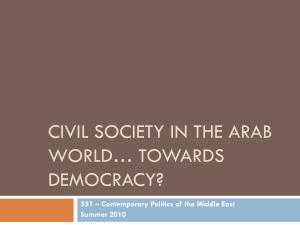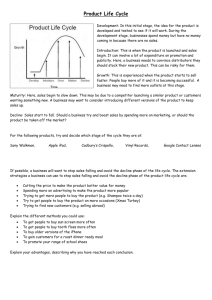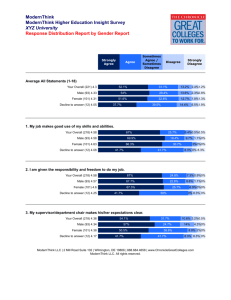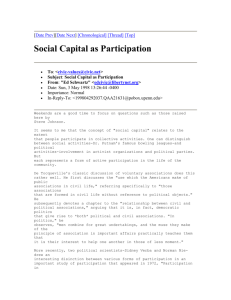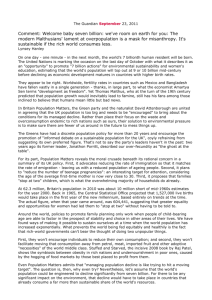Putnam
advertisement
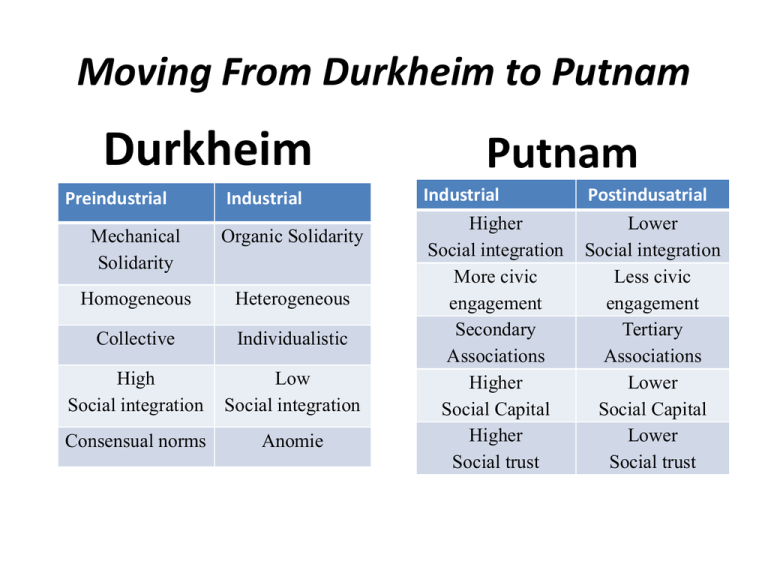
Moving From Durkheim to Putnam Durkheim Preindustrial Industrial Mechanical Solidarity Organic Solidarity Homogeneous Heterogeneous Collective Individualistic High Social integration Low Social integration Consensual norms Anomie Putnam Industrial Higher Social integration More civic engagement Secondary Associations Higher Social Capital Higher Social trust Postindusatrial Lower Social integration Less civic engagement Tertiary Associations Lower Social Capital Lower Social trust Bowling Alone: America's Declining Social Capital Alexis de Tocqueville's Democracy in America 1835 "Americans of all ages, all stations in life, and all types of disposition," he observed, "are forever forming associations. There are not only commercial and industrial associations in which all take part, but others of a thousand different types--religious, moral, serious, futile, very general and very limited, immensely large and very minute. . . . Nothing, in my view, deserves more attention than the intellectual and moral associations in America." 1 Social bonds & social networks “Far from being paleoindustrial anachronisms, these dense interpersonal and interorganizational networks undergird ultramodern industries, from the high tech of Silicon Valley to the high fashion of Benetton”. civically engaged communities Associations Networks Social Bonds Social Capital & Social Trust “Life is easier in a community blessed with a substantial stock of social capital”. Networks of civic engagement foster sturdy norms of generalized reciprocity and encourage the emergence of social trust. Life is easier... Networks facilitate coordination and communication. Life is easier… Networks amplify reputations. Life is easier… Networks allow dilemmas of collective action to be resolved. Life is easier.. Networks reduce opportunism. Life is easier… Networks serve as a cultural template for future collaboration. What’s happening to civic engagement in traditional secondary associations? • • • • • • • • • Decline in Voter turnout. Decline in participation in community meetings Decline in trust of government Decline in sports groups, professional societies, and literary societies. Decline in religious affiliation Decline in labor unions Decline in parent-teacher association (PTA) Decline in civic organizations, Decline in Fraternal organizations …………And decline in bowling leagues… Life is easier… Networks broaden the participants' sense of self, developing the "I" into the "we“. What does the new civic engagement look like? Mass membership tertiary associations ( AARP, NOW, Sierra Club) Nonprofit service agencies (Oxfam, Metropolitan Museum of Art) Support Groups (AA) The new associations Politically important but… Socially, ties are to leaders or ideals, not to one another. Does not produce the same type of social capital. Less Civic Engagement Less social capital Less social trust Four reasons why…. 1. The movement of women into the labor force. 2. Mobility: The "re-potting" hypothesis. 3. Other demographic transformations. 4. The technological transformation of leisure. What Is to Be Done? 1. Expand our definition of ‘social capital’ & explore what types of association produce it. 2. Investigate how other social changes affect social capital. 3. Analyze both the positive and negative characteristics of tight knit communities. 4. Explore chow public policy affects socialcapital formation.
